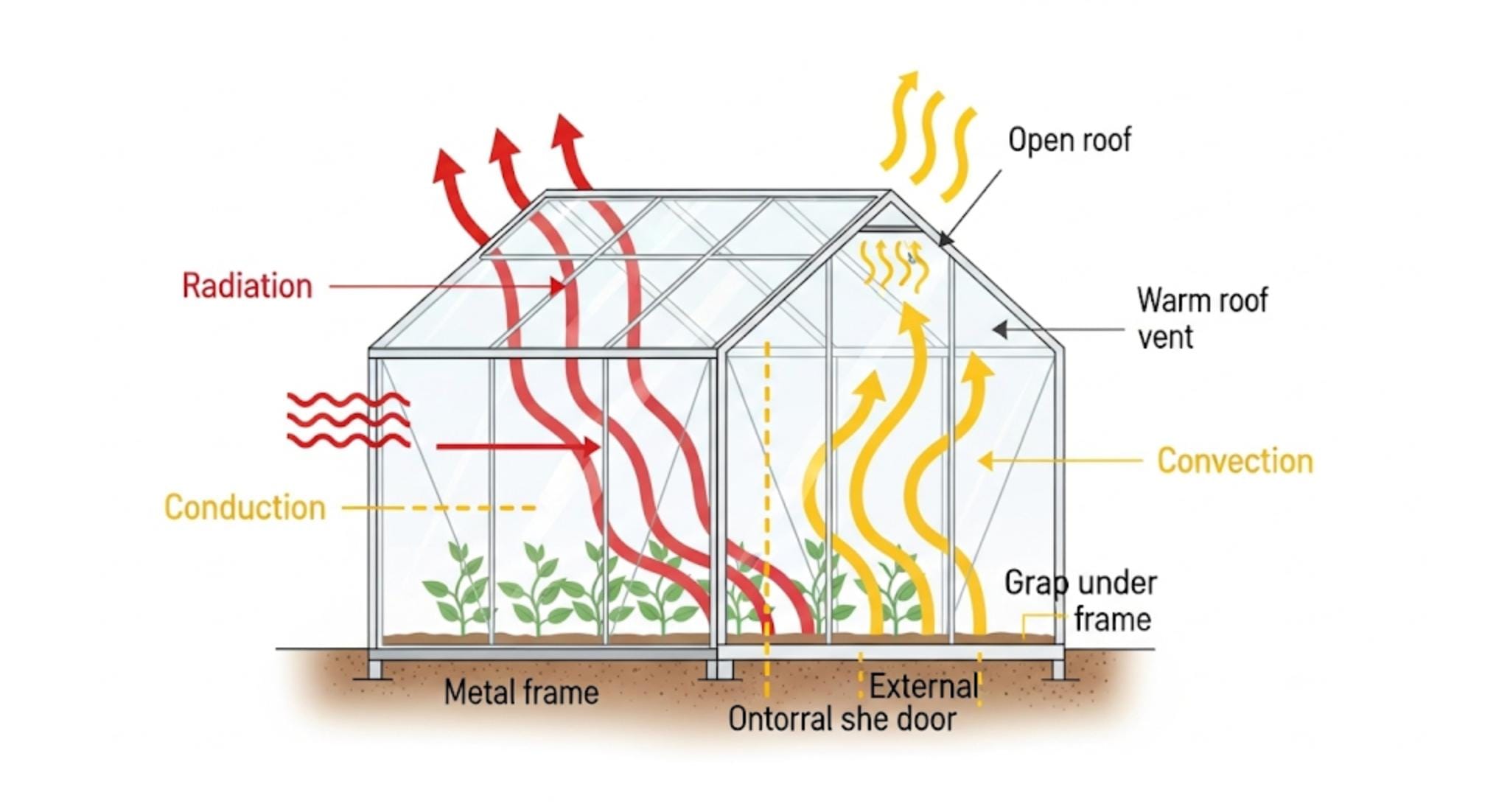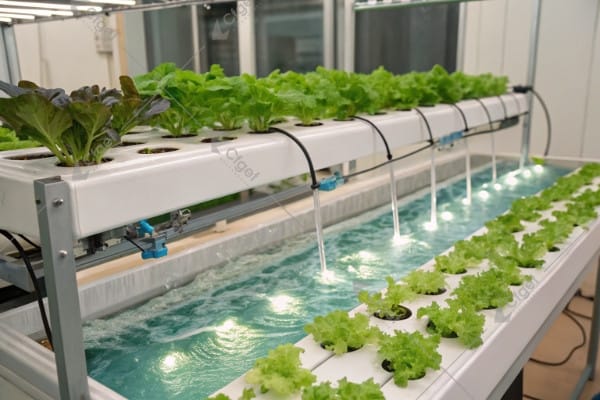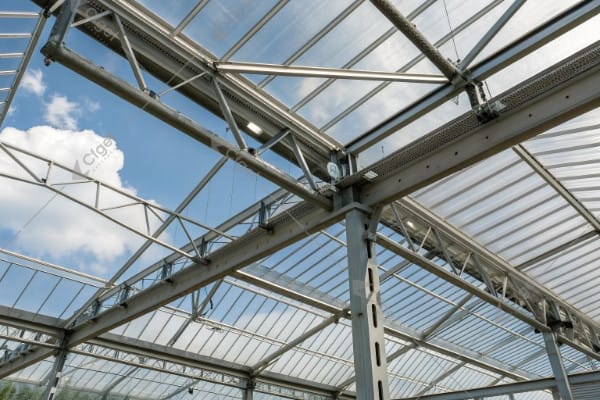Facing challenges with establishing a controlled growing environment without breaking the bank? Traditional structures can be costly. Plastic greenhouses offer a versatile and affordable alternative for many growers.
Yes, plastic greenhouses provide significant benefits, including excellent light transmission options tailored to crop needs, effective temperature regulation, robust protection from pests and weather, and notable cost-effectiveness compared to glass structures, making them highly advantageous for diverse agricultural applications.
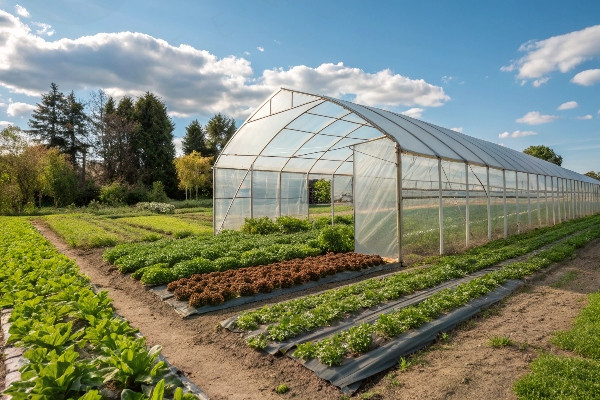
Throughout my 28 years at CFGET, designing and implementing over 1,200 greenhouse projects across more than 20 countries, I’ve seen plastic film greenhouses become the backbone for a vast majority of our agricultural clients. From vegetables in Southeast Asia to flowers in Europe, the adaptability and performance of modern plastic films are truly impressive. Let’s delve into why these structures are so popular and effective.
Don’t Miss: ——How to Choose the Right Plastic Greenhouse?
Enhanced Light Transmission and Temperature Control in Plastic Greenhouses?
Worried that plastic won’t provide the right light or warmth for your plants? Modern greenhouse plastics are engineered for optimal growing conditions, dispelling old myths about their performance.
Modern plastic greenhouse films offer excellent light transmission, often comparable to glass, with options for direct or diffused light. They also effectively trap heat (greenhouse effect), helping maintain stable temperatures crucial for plant growth.
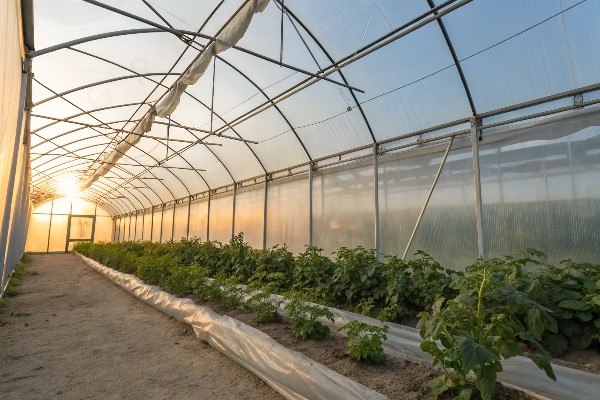
The quality of light and temperature stability are fundamental for successful greenhouse cultivation. Plastic films have evolved dramatically. We’re not talking about basic hardware store plastic; we use specialized agricultural films designed for longevity and specific optical properties. These films form the skin of the greenhouse, covering the frame, and play a critical role in creating the internal microclimate. A key feature in many high-quality films we use at CFGET is an anti-drip coating on the inner surface. As moisture evaporates from plants and soil, it condenses on the cooler film. Without this coating, water droplets would form and drip onto the plants, potentially spreading diseases and causing leaf burn. The anti-drip layer causes the condensation to form a thin sheet that flows down the curve of the greenhouse wall instead, keeping the plants dry. This simple technology makes a big difference in plant health, especially in humid environments like Southeast Asia. We ensure the films selected for our projects match the crop and climate perfectly.
How Do Different Plastic Films Affect Light Transmission?
Not all greenhouse plastic is the same. The type of film significantly impacts the light reaching the plants. Based on our experience, films generally fall into three main categories, although there are many specialized variations:
High-Transmittance (Clear) Films: These films allow maximum direct sunlight penetration. They aim to let in as much Photosynthetically Active Radiation (PAR) as possible.
- Best Use: Often preferred for fruiting crops like tomatoes, peppers, or cucumbers, especially in regions or seasons where light intensity might be a limiting factor. High light levels can drive photosynthesis and fruit development. We often recommend this type for fruit growers in regions with distinct seasons, like parts of Europe or Central Asia during peak growing times.
- Consideration: Can sometimes lead to high leaf temperatures or scorching under intense sun if not managed with shading or ventilation.
Diffused Films: These films contain additives that scatter the incoming sunlight. The overall light transmission might be slightly lower than clear film, but the light is distributed more evenly throughout the greenhouse.
- Best Use: Excellent for leafy greens, flowers, and bedding plants. Diffused light penetrates deeper into the plant canopy, illuminating lower leaves and reducing harsh shadows. This can lead to more uniform growth and potentially higher overall yields for certain crops. We find diffuse films very effective for flower growers aiming for uniform blooms, a common requirement for European markets. It also helps reduce heat stress.
- Consideration: May not be ideal if maximizing direct light intensity is the absolute priority.
Ordinary Films: These are typically standard clear films without advanced diffusion or specific high-transmittance properties.
- Best Use: Suitable for general vegetable cultivation and a wide range of terrestrial crops where specialized light diffusion isn’t critical. They offer a good balance of light and cost-effectiveness. Many of our vegetable projects in diverse regions utilize high-quality ordinary films successfully.
Here’s a comparison:
| Film Type | Light Quality | PAR Transmission | Shadow Reduction | Canopy Penetration | Typical Crops |
|---|---|---|---|---|---|
| High-Transmittance | Direct | Very High | Low | Moderate | Fruits (Tomatoes, Peppers), Vines |
| Diffused | Scattered | High | High | High | Flowers, Leafy Greens, Seedlings |
| Ordinary | Mostly Direct | Good | Low | Moderate | General Vegetables, Various Crops |
How Does Plastic Film Aid Temperature Control?
Plastic films contribute significantly to maintaining a stable temperature environment.
- Greenhouse Effect: Like glass, plastic film is largely transparent to incoming shortwave solar radiation (sunlight) but opaque to outgoing longwave radiation (heat) emitted from the ground and plants. This traps heat inside, raising the internal temperature above the ambient outdoor temperature. This is crucial for extending growing seasons and enabling year-round production, especially in cooler climates.
- Insulation Properties: While a single layer of plastic offers some insulation, using double layers (inflated with air) dramatically improves thermal performance. An air gap between two layers of film acts as an insulator, significantly reducing heat loss at night or during cold weather. This is a common practice we implement for clients in Central Asia or northern Europe to reduce heating costs.
- IR Additives: Some films contain Infrared (IR) additives that further enhance heat retention by reflecting more of the outgoing longwave radiation back into the greenhouse at night.
- Ventilation Interaction: While trapping heat is beneficial, preventing overheating is equally important. The effectiveness of temperature control also depends heavily on the greenhouse’s ventilation system (roof vents, side vents, fans). The plastic film works in conjunction with these systems to regulate temperature. We design ventilation capacity based on the film type, greenhouse volume, and local climate data.
Choosing the right plastic film involves balancing light requirements, temperature management needs, crop type, and budget. Our role at CFGET often involves guiding clients through these choices, leveraging our experience from thousands of projects to select the optimal film for their specific situation, ensuring both enhanced light transmission and effective temperature control.
Cost-Effectiveness of Plastic Greenhouses vs. Glass Greenhouses?
Is the initial investment in a greenhouse a major hurdle? Plastic greenhouses offer a significantly more affordable entry point compared to traditional glass structures, making controlled agriculture accessible to more growers.
Plastic greenhouses typically have substantially lower upfront costs for materials (film vs. glass panels) and supporting structures (lighter frames needed). This makes them a more budget-friendly option, especially for large-scale projects.
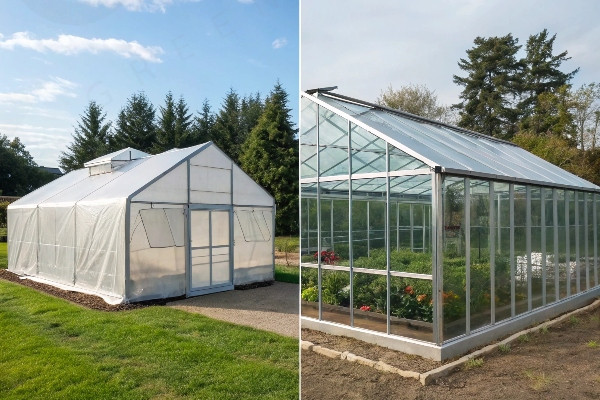
The cost factor is often a primary driver for choosing plastic film greenhouses. While glass greenhouses have their own advantages, particularly longevity and potentially higher light transmission in some cases, their cost can be prohibitive for many. I’ve worked with numerous growers, from startups to established farms expanding their operations, where the lower capital investment of a plastic greenhouse was the deciding factor. This is particularly true for clients in regions prioritizing rapid return on investment or where capital is constrained, such as in parts of Southeast Asia or for certain high-volume, lower-margin crops. The savings on the initial build allow growers to allocate more resources towards internal systems like irrigation, climate control, or automation, which directly impact productivity.
What Are the Main Cost Differences in Materials and Structure?
The fundamental difference lies in the covering material and the structure required to support it.
Covering Material:
- Plastic Film: Greenhouse-grade polyethylene film is far less expensive per square meter than glass panels. Even high-quality, multi-year films with UV inhibitors, anti-drip coatings, and IR additives are significantly cheaper than glass.
- Glass: Requires individual glass panes, which are inherently more costly to manufacture, transport, and handle due to their weight and fragility.
Supporting Structure (Frame):
- Plastic Greenhouses: Because plastic film is lightweight, the supporting frame (typically galvanized steel) doesn’t need to be as heavy or robust as one designed to hold glass. This reduces the amount of steel required, lowering material costs and often simplifying foundation requirements. Quonset (hoop house) designs, common for plastic films, are structurally efficient and use less material than the typical A-frame or Venlo structures often used for glass.
- Glass Greenhouses: The substantial weight of glass necessitates a much heavier, stronger, and more complex frame structure, significantly increasing steel costs and often requiring more substantial concrete foundations.
Installation Labor:
- Plastic Greenhouses: Installing large rolls of plastic film is generally faster and requires less specialized labor compared to glazing a greenhouse with individual glass panes. Handling film is less risky than handling fragile glass.
- Glass Greenhouses: Glazing is a more time-consuming and skilled process, increasing labor costs. The risk of breakage during installation also adds a potential cost factor.
What About Long-Term Costs and Considerations?
While the upfront cost is lower, long-term costs need consideration too.
- Film Replacement: The main long-term cost associated specifically with plastic greenhouses is film replacement. Standard greenhouse films typically last 3-5 years, depending on the quality, UV exposure, climate, and installation care. High-end films might last longer. This recurring cost needs to be factored into the operational budget. However, the cost of replacement film is still relatively low compared to the initial savings.
- Glass Longevity: Glass panels can last for decades (30+ years) if undamaged. Their main long-term cost relates to potential breakage (hail, accidents) and seal/gasket maintenance.
- Energy Costs: Historically, single-layer plastic was less insulating than glass. However, double-layer inflated plastic systems offer insulation (R-value) comparable to or even better than single-pane glass, making heating costs potentially similar or lower in well-designed plastic structures. High-performance glass (double-paned, coated) offers better insulation but comes at a much higher initial cost.
- Maintenance: Plastic films may require occasional patching if punctured, but general maintenance is low. Glass requires regular cleaning to maintain light transmission and occasional checks of seals and glazing bars.
Here’s a simplified cost overview:
| Cost Factor | Plastic Greenhouse (Single Layer) | Plastic Greenhouse (Double Inflated) | Glass Greenhouse (Single Pane) |
|---|---|---|---|
| Initial Material | Low | Low-Moderate | High |
| Structure Cost | Low | Low | High |
| Installation | Low | Low | Moderate-High |
| Upfront Total | Lowest | Low-Moderate | Highest |
| Cover Lifespan | 3-5 Years | 3-5 Years | 30+ Years |
| Replacement Cost | Low (Recurring) | Low (Recurring) | Very High (If Breakage) |
| Insulation | Poor | Good | Moderate |
For many agricultural applications, particularly large commercial operations and growers in developing markets, the significantly lower initial investment of plastic greenhouses is a compelling advantage. At CFGET, we often help clients analyze the total cost of ownership, considering their budget, crops, climate, and long-term goals. While glass has its place, the cost-effectiveness of modern plastic film greenhouses makes advanced growing technology accessible to a much broader range of producers globally.
Protecting Your Plants: How Plastic Greenhouses Shield Against Pests and Weather?
Are external threats like insects, storms, or frost constantly undermining your crop yields? Plastic greenhouses create a crucial protective layer, buffering your plants from numerous environmental hazards.
The plastic film covering acts as a robust physical barrier, effectively shielding crops from damaging weather like heavy rain, wind, hail, and light frost, while also significantly reducing the entry of airborne pests and disease vectors.
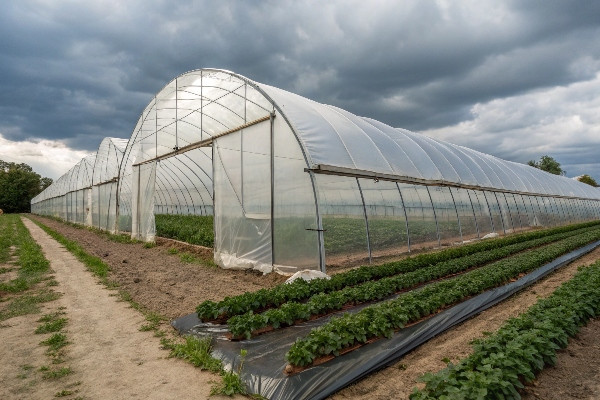
Protecting the crop is a fundamental reason for investing in a greenhouse. I’ve seen the devastation hail or a sudden pest infestation can cause in an open field – wiping out months of work in hours. Plastic greenhouses provide a sanctuary. The film itself takes the brunt of bad weather, and the enclosed space limits pest access. This level of protection leads to more predictable yields and higher quality produce, as plants aren’t constantly stressed or damaged by external factors. For our clients in regions prone to strong monsoons (Southeast Asia) or sudden storms and temperature swings (Central Asia), this protective capability is invaluable. It turns high-risk open-field farming into a much more manageable and secure operation.
How Does the Plastic Barrier Protect Against Weather?
The film covering offers multi-faceted weather protection:
- Rain and Hail: The plastic sheeting prevents rain from directly impacting plants, which reduces physical damage to leaves and flowers, prevents soil erosion (in soil-based systems), and lowers the incidence of splash-dispersed fungal diseases. It also offers significant protection against moderate hail, which can shred crops in the open. The durability of the film (thickness, UV treatment) influences its resistance.
- Wind: The structure significantly reduces wind speed around the plants, preventing physical damage like broken stems or torn leaves. It also reduces the wind chill factor and minimizes moisture loss from transpiration caused by dry winds. The structural integrity of the greenhouse frame itself is crucial for withstanding high winds, something we carefully calculate in our CFGET designs based on regional wind load requirements.
- Temperature Moderation: As discussed previously, the greenhouse effect traps heat, offering protection against light frosts and extending the growing season in cooler climates. While not typically designed for deep freezes without heating, it provides a buffer against sudden cold snaps. Shade cloths used in conjunction with the plastic can also reduce extreme heat stress.
- UV Radiation: Greenhouse films are treated with UV inhibitors. This protects the plastic itself from degradation by sunlight, extending its lifespan. It also shields plants from potentially harmful levels of UV radiation, although plants do require certain levels of UV for healthy growth. Some specialized films can manipulate the UV spectrum transmitted.
How Does the Enclosure Reduce Pest and Disease Pressure?
The physical barrier is the first line of defense against biological threats:
- Insect Exclusion: As mentioned earlier, the film itself blocks entry for most flying insects. Properly screened vents and well-sealed doors are critical complements to this barrier. Reducing insect entry directly reduces plant damage and, importantly, limits the spread of insect-vectored viruses (like Tomato Spotted Wilt Virus spread by thrips).
- Exclusion of Larger Pests: Birds, rodents, rabbits, and other animals that can damage crops are effectively kept out.
- Reduced Disease Inoculum: By preventing rain splash and reducing windblown soil particles, the greenhouse environment lowers the chance of certain fungal and bacterial pathogens reaching the plant surfaces. The controlled humidity (ideally avoiding prolonged leaf wetness) further discourages many foliar diseases.
- Facilitating Integrated Pest Management (IPM): The enclosed environment makes IPM strategies much more effective.
- Easier Monitoring: Detecting pests early is simpler in a contained space.
- Biological Control Efficacy: Beneficial insects released inside are contained and can establish populations more effectively without migrating away.
- Targeted Treatments: If chemical intervention is needed, it can be applied more precisely within the enclosed space, reducing drift and environmental impact.
Here’s a summary of the protective benefits:
| Threat | Open Field Exposure | Plastic Greenhouse Protection1 | Benefit |
|---|---|---|---|
| Heavy Rain | High Impact, Splash | Barrier (Film Roof) | Reduced Damage, Less Soil Erosion & Disease |
| Wind | Direct Force, Drying | Barrier (Structure & Film) | Reduced Physical Damage & Water Stress |
| Hail | High Damage Risk | Significant Protection (Film) | Prevention of Crop Shredding |
| Light Frost | Damage Risk | Temperature Buffer (Greenhouse Effect) | Season Extension, Reduced Cold Damage |
| Flying Insects | Constant Access | Barrier (Film), Screens (Vents) | Drastically Reduced Infestation & Virus Risk |
| Animal Pests | Access Possible | Barrier (Structure & Film) | Exclusion of Birds, Rodents, etc. |
| Fungal Spores | Windblown, Rain Splash | Reduced Entry, No Rain Splash, Humidity Control Possible | Lower Disease Pressure |
The protective bubble created by a plastic greenhouse is a major advantage. It allows growers to manage risks far more effectively than in the open field, leading to more consistent production and higher quality crops. At CFGET, ensuring the structure and film provide reliable protection against prevalent local threats is a key part of our design process, whether it’s typhoons in Southeast Asia or pests common in European agriculture.
Is Clear or Colored Plastic Better for Greenhouses?
Confused about which type of plastic film is best for your crops? The choice between clear, diffused, or even colored films depends heavily on what you’re growing and your specific environmental conditions.
Generally, clear (high-transmittance) plastic is chosen for maximizing direct light, often benefiting fruiting crops. Diffused plastic scatters light, reducing shadows and potentially improving growth for leafy greens or flowers. Colored plastics are rare and used for highly specific purposes.
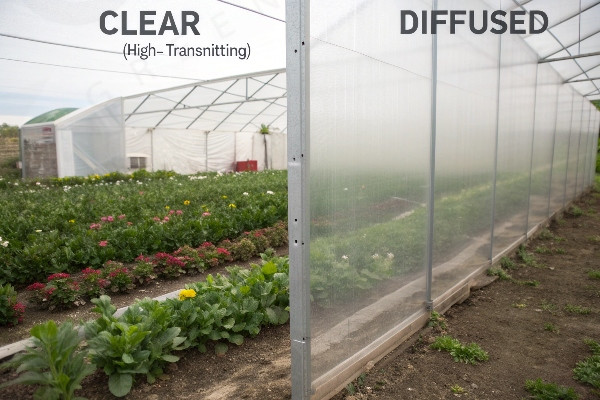
Choosing the right film is critical for optimizing plant growth. It’s not just about letting light in; it’s about managing the quality and distribution of that light. Over my years at CFGET, we’ve helped countless growers navigate this choice. The decision often comes down to the primary limiting factors in their environment and the specific needs of their crops. For instance, a tomato grower in a region with shorter days might prioritize a high-transmittance film, while a lettuce grower in a very sunny climate might opt for a diffused film to prevent scorching and improve light penetration into the dense canopy. Based on our extensive experience across 1,200 projects, we typically categorize films into high-transmittance, diffused, and ordinary types to simplify the initial selection process for clients.
Understanding Light Transmission: Clear vs. Diffused
The main difference lies in how the film handles incoming sunlight.
Clear (High-Transmittance) Films:
- Mechanism: Designed for maximum transparency to PAR (Photosynthetically Active Radiation, the light wavelengths plants use for photosynthesis). Allows sunlight to pass through directly with minimal scattering.
- Pros: Delivers the highest light intensity to the upper canopy. Ideal when light is the primary limiting factor (e.g., winter months, low-light climates). Often preferred for crops where high light intensity drives yield, like many fruits (tomatoes, peppers, watermelon).
- Cons: Can create harsh shadows within the plant canopy, leaving lower leaves less illuminated. Can lead to overheating or sun scald on upper leaves and fruit in intense sun conditions if not managed with shading or ventilation.
Diffused Films:
- Mechanism: Contain microscopic particles that scatter sunlight as it passes through. The film might appear slightly hazy or milky. Total PAR transmission might be slightly lower (e.g., 85-90% vs. 90-92% for clear), but the light quality changes significantly.
- Pros: Distributes light more evenly throughout the greenhouse and deeper into the plant canopy, reducing shadows. Lowers the risk of sun scald by reducing direct beam intensity. Can lead to more uniform plant growth and potentially higher overall photosynthesis in dense canopies. Often favored for flowers (like roses, where uniform color and bloom are key), leafy greens, herbs, and seedlings.
- Cons: Slightly lower peak light intensity compared to clear film. May not be the best choice if maximizing direct light is essential.
Ordinary Films:
- Mechanism: Basic clear films without enhanced diffusion or specific high-transmittance optimization. Still offer good light transmission suitable for many crops.
- Pros: Generally the most cost-effective option. Suitable for a wide range of common vegetables and terrestrial crops where specific light manipulation isn’t the top priority.
- Cons: Lacks the specialized benefits of high-transmittance or diffused films. Performance is good but not optimized for specific light-sensitive scenarios.
What About Colored Plastics?
While less common in commercial agriculture, colored plastics exist:
- Purpose: These films selectively filter wavelengths of light. For example, red or blue films might be used in research to study specific photomorphogenic responses (how light affects plant shape and development). Some photoselective films aim to block wavelengths that encourage certain pests or diseases.
- Application: Primarily used in research settings or for very niche, high-value crops where specific light spectrum manipulation is proven to be beneficial and cost-effective. Not typically recommended for general production due to cost and potential negative impacts from filtering out useful light wavelengths.
Here’s a table summarizing suitability based on crop type (general guidelines):
| Film Type | Light Characteristic | Best Suited For | Why? | CFGET Experience Example |
|---|---|---|---|---|
| High-Transmittance | Maximum Direct PAR | Fruits (Tomatoes, Peppers, Melons), Vines | Maximizes light for energy-intensive fruit production | Supporting high-yield tomato projects in Europe. |
| Diffused | Scattered, Even PAR | Flowers (Roses), Leafy Greens (Lettuce), Bedding Plants | Reduces shadows, prevents scorching, promotes uniform growth | Optimizing light for cut flower production for export markets. |
| Ordinary | Good Direct PAR | General Vegetables (Cabbage, Root Crops), Diverse Crops | Cost-effective, suitable for crops without special light needs | Foundation for many large-scale vegetable farms globally. |
| Colored/Selective | Specific Wavelengths | Research, Niche Applications | Studying plant responses, specialized pest/disease control | Usually supplied to research institution clients. |
The choice isn’t always clear-cut and can depend on climate, season, specific cultivar, and grower preference. At CFGET, we consider all these factors. We understand that selecting the right film for, say, watermelon might differ from choosing one for roses. By analyzing the client’s specific situation – their crop, their location (like high light in Central Asia vs. cloudier conditions elsewhere), and their operational goals – we provide professional advice to ensure the plastic film chosen truly benefits their cultivation efforts.
Conclusion
Plastic greenhouses offer compelling benefits: adaptable light transmission, effective temperature control, crucial protection from weather and pests, and significant cost-effectiveness, making them a smart choice for diverse growers worldwide.
Explore this link to understand how plastic greenhouses can enhance crop protection and yield, ensuring better farming outcomes. ↩

